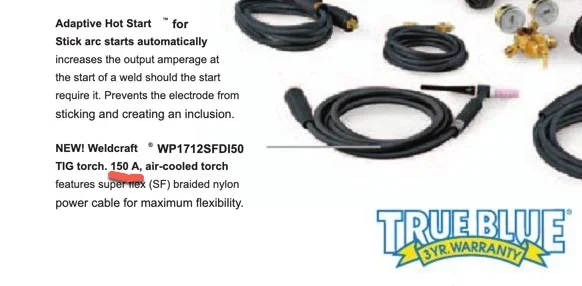Ignorant question here...when they use a number as 210 in the name of the welder as in " Hobart2 210MVP" does that mean anything in regards to welding amps? I have seen the Hobart 210MVP mig welder advertised as having 210 Amp but the seemingly more accurate descriptions I've read on it indicate only 150 amps. I have a little 115 volt mig welder that uses the model name "135e" and I was originally under the impression that it could weld with 135 amps but in fact in will only do 80 amps max. What gives? Is that just marketing BS or am I not understanding something?
That's not ignorant at all. You're just using your brain, so stop that...marketers will unfriend you.
The short answer is it is
mostly marketing as you suspect. There's a long answer that involves Tier 2 and 3 welder manufacturers copying the naming conventions of the big boys to try to compete, and then there's another longer answer involving duty cycles as mentioned by
@Tom Kitta. Years ago I took a deep dive into this and found some Tier 3s had specs that said things like "150 Amps @ 20.5% duty cycle"—so they were obviously recalculating the ratio just so they could put 150 Amps on the outside of the box. With those kind of ethics I'll bet they put three exclamation marks after the claim as well.
Even Miller plays games. Take the Syncrowave 200. If you look at their sell sheets it says Amperage
Range, not Amperage. In other words, you can adjust the potentiometer to 200 Amps, but that doesn't mean you can get that as an output current. In fact if you look at the curve in their own literature (buried at the end of course) it even shows you how voltage dramatically drops off at 200 Amps.
For brand loyalists, it is always tempting to let your mind think, "Oh, I'm sure they are being honest" because, let's face it...that shiney new blue (or red) box looks so darn nice. But look just a little further and there is a telltale sign it ain't
routinely spitting out 200 Amps: it comes with a 150 Amp torch (exclamation mark here if I believed in them).
So your instinct is right. It generally is marketing. If we were being nice we would say it's a stretch objective—kind of like my 1988 Chevy Cavalier's speedometer went to 120 MPH.


